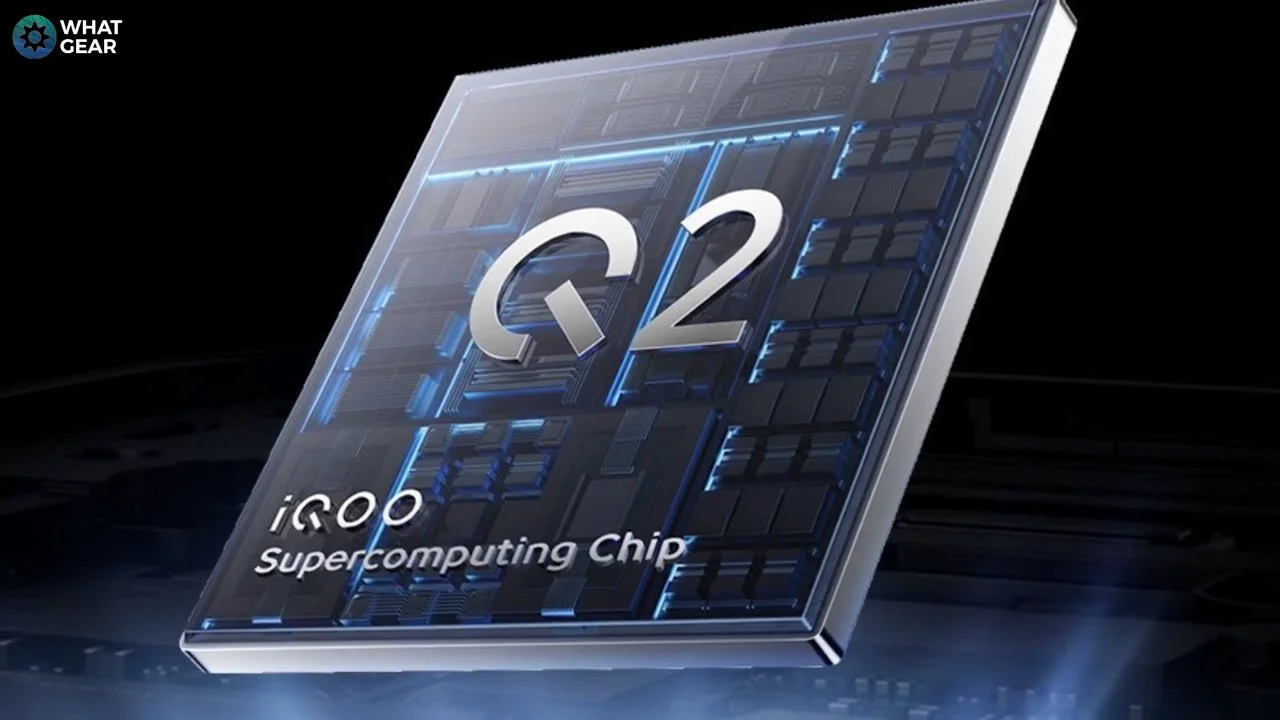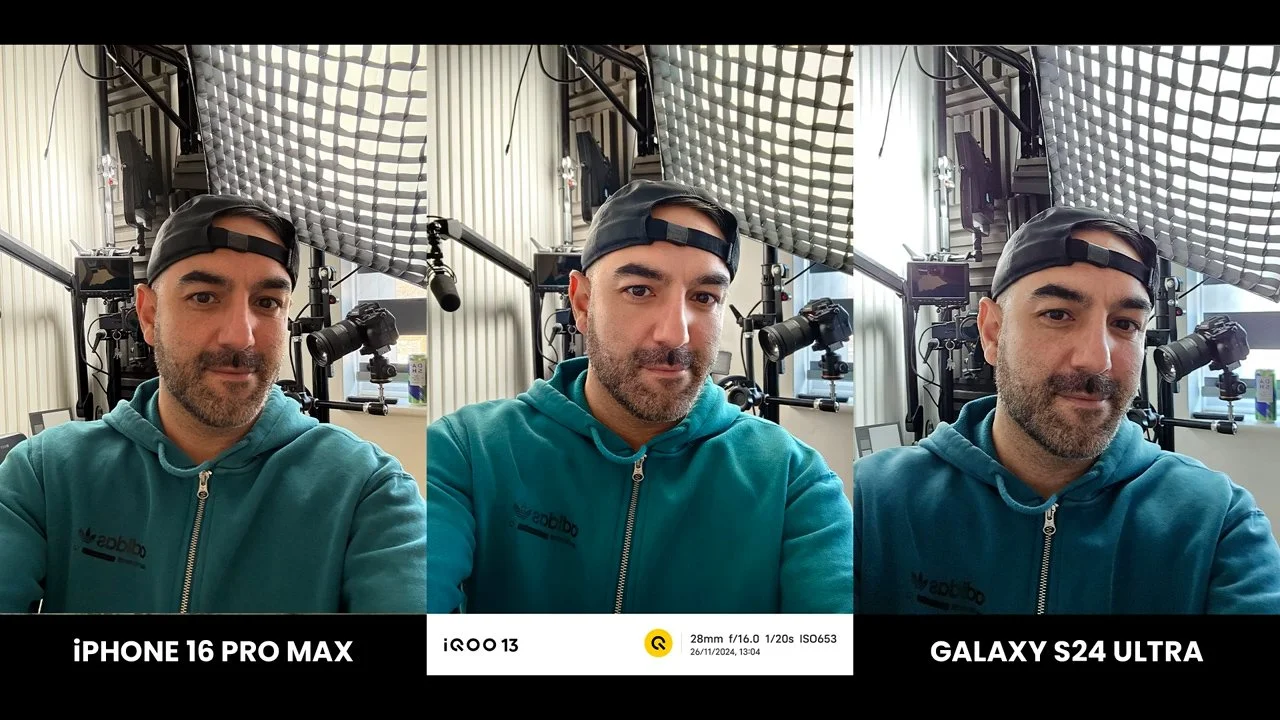The Worlds Fastest Phone! - iQoo 13 Review & Benchmarks
This is the iQoo 13. One of the world's first phones to have the brand new Snapdragon 8 Elite chip from Qualcomm. Which makes it one of the world's most powerful smartphones at the time of this video.
So here's what I'm going to do. We'll run through the design and specs of this absolute monster of a smartphone. Later on, it will get really interesting because I will benchmark the iQoo 13's Snapdragon 8 Elite 3nm chipset against two of the best, most popular, and most powerful smartphones in 2024. The Samsung Galaxy S24 Ultra and the iPhone 16 Pro Max…
So you can get a good idea of how powerful and efficient things have gotten going in 2025. Buckle up, speed demons, because things are about to get interesting.
A Glimpse of the Beast
So, there are quite a few very interesting design aspects and hardware choices iQoo has made here that I think will impress you. Let's start with the display. So 120Hz is kind of becoming old news these days…You even see them sometimes on budget phones.
Of course, the iQoo 13 is no budget smartphone. It is a fully fledged flagship and it has a flat Q10 2K 144HZ LTPO 8T AMOLED display. So, it can adjust from 1Hz to the full 144Hz when needed. And the pixels per inch is an incredible 510… And this 6.82" display has the thinnest bezels ever seen on an iQoo phone.
And it looks good, and do you know what else looks good at 4500nits of peak brightness. That's an insane amount when compared to the iPhone's 2000 nits and 2600 nits on the Galaxy S24 Ultra. The display has been circulatory polarised & has been awarded various Tuv Rheinland certificates, so you don't have to worry about burning the TikTok watermark into retinas.
I also mentioned Q10 when introducing this screen. And this actually a reference to a layer on top of the display. Here are some of the notable improvements that IQoo's Q10 light emitting material used on top Amoled brings to the table. The colours are also fantastic here, and of course, the contrast is also top tier with a ratio of 8 million to 1.
Colour Options
There are two colours available. The Alpha colour is a darker grey that uses a glass fibre back panel, and there is this one, the Nardo Grey, with a glass back panel, which has been named after the Nardo Ring race track in Italy.
This is probably because iQoo is a premium partner of BMW M motorsports & some of this phone's design shares that DNA. And here's a couple of interesting facts. Do you know what iQoo means…well, I actually didn't until now. It stands for 'I Quest One & On', which reminds me of my attitude towards the call of duty warzone. I have a problem with giving up, even when I keep losing.
Check this out: the little BMW Motorsports symbol is actually iQoo's own version of it, and each colour holds a meaning. Anyway…The frame is aluminium, and the edges are flat. It has stereo speakers, a sonic fingerprint scanner under the display, and a selfie punch-hole camera in the display.
And it's sealed up to meet the IP68 & IP69 ingress protection rating. So you'll have no problem if you get caught out in the rain. And it does have a dual sim tray but, sadly, no expandable SD card slot.
Storage & Ram & Power
But the memory options here are good. You can get either 256GB or 512GB of UFS 4 storage with either 12 or 16GB of DDR5X RAM.
The battery is just over 6000mAh, which is hard to believe because the phone isn't excessively heavy at 219 grams or bulky. And actually the Alpha colour variant is even lighter.
And it's because iQoo is using 3rd gen silicon carbon anode tech which allows the battery to remain slim whilst housing more power, and the speed of power delivery is also top spec at 120 watts & the charger is in the box… Apple fans, be like ‘Noooo that’s impossible!’ and Samsung & Pixel fans, to be fair.
Now, I will come to the camera module design and camera hardware because there's more than meets the eye to be seen here. But let's focus on speed and power first.
Benchmark Showdown
So before we do the benchmarks. You need to know a few things: the iQoo 13 is the first smartphone with an over 4 GHz clock speed. Its peak clock speed is 4.32 GHz. CPU performance from the Snapdragon 8 Elite is up 45%, and power efficiency is up 44% compared to the Snapdragon 8 Gen 3 used on the Galaxy S24 Ultra. And if that wasn't enough. iQoo has taken it one step further with its own Super Computing Q2 chip.
To put this simply. This iQoo Q2 chip's sole purpose is to drive a consistently high rate without consuming too much power. So, let's see how this plays out.
To see the full benchmark watch the video here
Ok, so immediately after running the benchmarks, I did a quick thermal reading on these three phones. Because I wanted to see how the iQoo's 7K Ultra VC Cooling system handled the heat…and
Unleashing the Power
So, iQoo's focus here is on performance & power. And certainly get that here. The Software is Vivo's Fun Touch OS 15, running on Android 15. And you get all the typical Android 15 settings and features. And, of course, a bunch of FunTouch customisation tweaks for animations, icons and wallpapers.
However, there aren't any exclusive on-device AI features like you see on Galaxy phones. But there is nothing to stop you from installing Google Gemini and other AI apps and other things like that.
And on the topic of Apps, when you set it up for the first time, you will have to spend a bit of time uninstalling some unnecessary apps and app recommendation folders if they bother you, but apart from that, it's a pretty slick operating system.
And the iQoo will literally slice through anything you throw at it. And truly excels in gaming
The Monster Halo Camera
Remember how I said I'd return to the camera module. Well, check this out. This camera design is what iQoo calls the Monster Halo & not just because of the monster hardware that it houses.
What you can see at first glance is beneath the glass and under the black surface that the cameras are encased in some customisable RGB. There are 72 different lighting options you can use here. And you can use them for incoming calls and notifications & and there's also an atmospheric light mode for when you just want to show off… and yes it will use battery, but then remember you got 1000mAh more than most flagship smartphones here on the iQoo 13.
I can't wrap this up without talking about the camera hardware itself. Vivo, the parent company to iQoo, are no stranger to flagship camera performance, and they have certainly put effort into it. The iQoo 13’s has 4 cameras. A 32 MP F2.45 equivalent aperture and the performance is very good.
On the back, you've got two Sony Sensors, the 50MP IMX 921 VCS True Colour as the primary aperture equivalent here is F1.88 23mm, and a very impressive 50MP Sony IMX 816 telephoto which ranges from 2x up to 10X. The Ultra wide is a 50MP JN1 sensor from Samsung that also performs well.
But to truly see how good they are, you need to see them compared to what people consider the best. So let me know if you want to see a camera comparison with the iQoo 13 & if so, what phones do you want to see it compared to… one thing I will say is the iQoo range of phones is all about speed and power, and it's really Vivo's flagships like the X200 and X200 pro that all about the camera. And hopefully, I will be getting that phone soon for review too…so stay tuned for that.




























